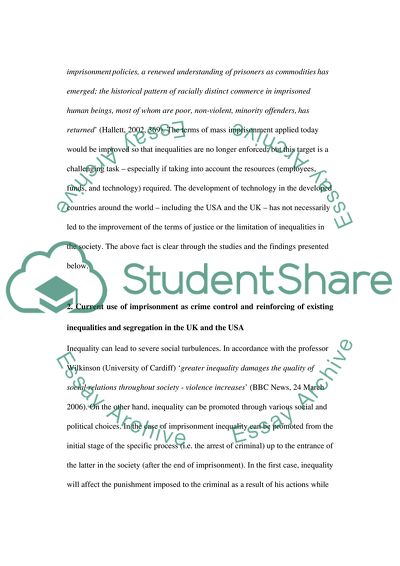Cite this document
(“To What Extent Does the Current Use of Imprisonment as Crime Control Research Paper”, n.d.)
To What Extent Does the Current Use of Imprisonment as Crime Control Research Paper. Retrieved from https://studentshare.org/social-science/1719331-to-what-extent-does-the-current-use-of-imprisonment-as-crime-control-reinforce-existing-inequalities-and-segregation-in-the-uk-and-the-usa
To What Extent Does the Current Use of Imprisonment as Crime Control Research Paper. Retrieved from https://studentshare.org/social-science/1719331-to-what-extent-does-the-current-use-of-imprisonment-as-crime-control-reinforce-existing-inequalities-and-segregation-in-the-uk-and-the-usa
(To What Extent Does the Current Use of Imprisonment As Crime Control Research Paper)
To What Extent Does the Current Use of Imprisonment As Crime Control Research Paper. https://studentshare.org/social-science/1719331-to-what-extent-does-the-current-use-of-imprisonment-as-crime-control-reinforce-existing-inequalities-and-segregation-in-the-uk-and-the-usa.
To What Extent Does the Current Use of Imprisonment As Crime Control Research Paper. https://studentshare.org/social-science/1719331-to-what-extent-does-the-current-use-of-imprisonment-as-crime-control-reinforce-existing-inequalities-and-segregation-in-the-uk-and-the-usa.
“To What Extent Does the Current Use of Imprisonment As Crime Control Research Paper”, n.d. https://studentshare.org/social-science/1719331-to-what-extent-does-the-current-use-of-imprisonment-as-crime-control-reinforce-existing-inequalities-and-segregation-in-the-uk-and-the-usa.


